Southern New Mexico Economic Indicators

Fourth Quarter 2021
The Las Cruces economy’s recovery from the pandemic-induced recession has slowed since May 2021, when the metro added 1,081 jobs in just one month. In the following six months, the local area only gained a net 426 jobs. Daily COVID-19 cases in early January 2022 are rising. The local housing market remained strong, though sales were down from their April 2021 highs, and monthly trade volumes neared their prepandemic levels. The monthly rig count rose, while oil production in New Mexico fell.
Labor Market
Las Cruces employment contracted an annualized 3.1 percent, or by 188 jobs, in November (Chart 1). Employment losses were widespread but particularly acute in manufacturing (-56 jobs), government (-56), and trade, transportation and utilities (-46). The only sector with monthly jobs gains was leisure and hospitality, adding 86 jobs.
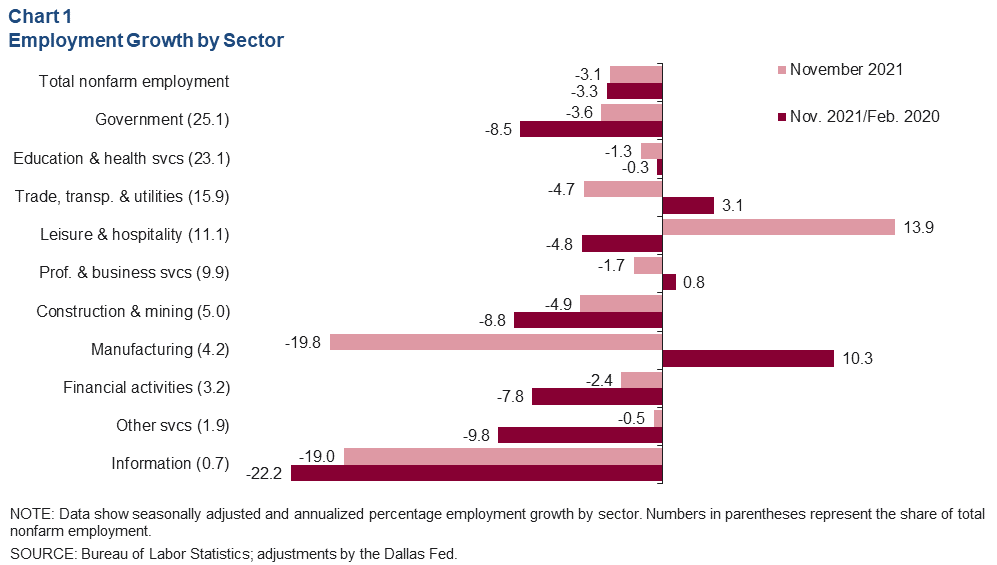
Since the onset of the pandemic, Las Cruces payrolls are down 2,470 jobs as of November. Sectors that have experienced major job losses include government (-1,675 jobs), leisure and hospitality (-403), and construction and mining (-349). The trade, transportation and utilities and manufacturing sectors expanded during this period, adding 347 and 281 jobs, respectively.
The southern New Mexico unemployment rate stood at 5.9 percent in November, unchanged from the prior month. Luna County’s unemployment rate remained the highest in southern New Mexico at 12.7 percent, while Curry County’s rate was the lowest in the region at 3.9 percent. Las Cruces’ unemployment rate fell from 6.3 percent in October to 6.1 percent in November, and New Mexico’s rate fell from 6.5 percent to 6.2 percent.
Daily COVID-19 Cases and Deaths
Daily COVID-19 cases and deaths continue to surge in the Las Cruces metro. As of Jan. 4, 2022, the seven-day moving average of daily cases was 227, an increase of 93 daily cases in the last two weeks (Chart 2). However, daily COVID-19 deaths fell during this period from an average of two to one per day.
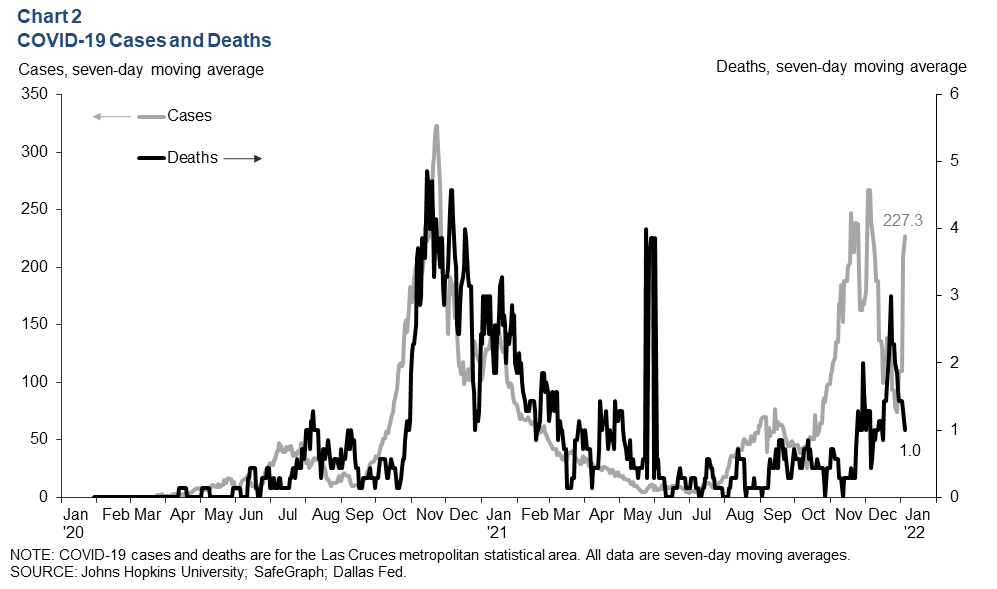
As of Jan. 4, 41,922 cases and 605 deaths have been reported in the Las Cruces metro area since the onset of the pandemic. Las Cruces’ COVID-19 case rate is 190 per 1,000 residents—9.5 percent higher than in the rest of the U.S. (excluding Las Cruces) at 173 per 1,000 residents. The metro’s death rate is 2.7 per 1,000 residents, similar to the rest of the nation’s rate (excluding Las Cruces) of 2.5 per 1,000 residents.
Housing Market
Las Cruces home sales totaled an annualized 2,447 in December, up 1.8 percent from a year ago but down 3.9 percent from their peak in April 2021 (Chart 3). The inflation-adjusted median home price in Las Cruces (based on a six-month moving average) was $264,943 in December, up 9.0 percent from a year prior but down 3 percent from November.
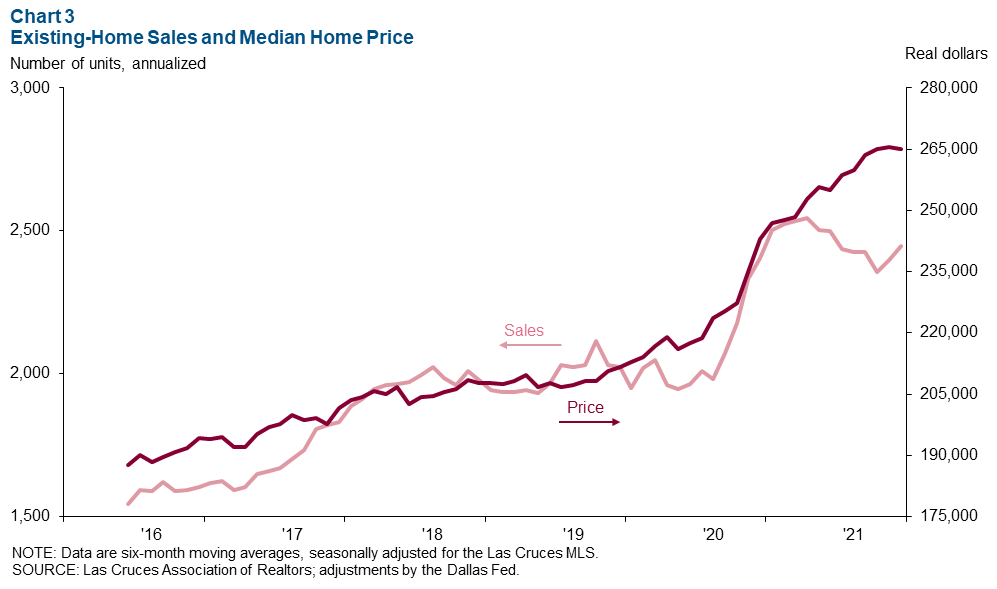
Southern New Mexico Trade
In October, annualized total trade primarily through the Santa Teresa port in southern New Mexico was $30.2 billion, 3.5 percent above September and down just 4.4 percent from February 2020, when monthly trade totaled $31.6 billion (Chart 4). The monthly gain was driven by an increase of 11.5 percent in exports, while imports fell by 2 percent. Exports were $13.3 billion, while imports equaled $16.9 billion in October.
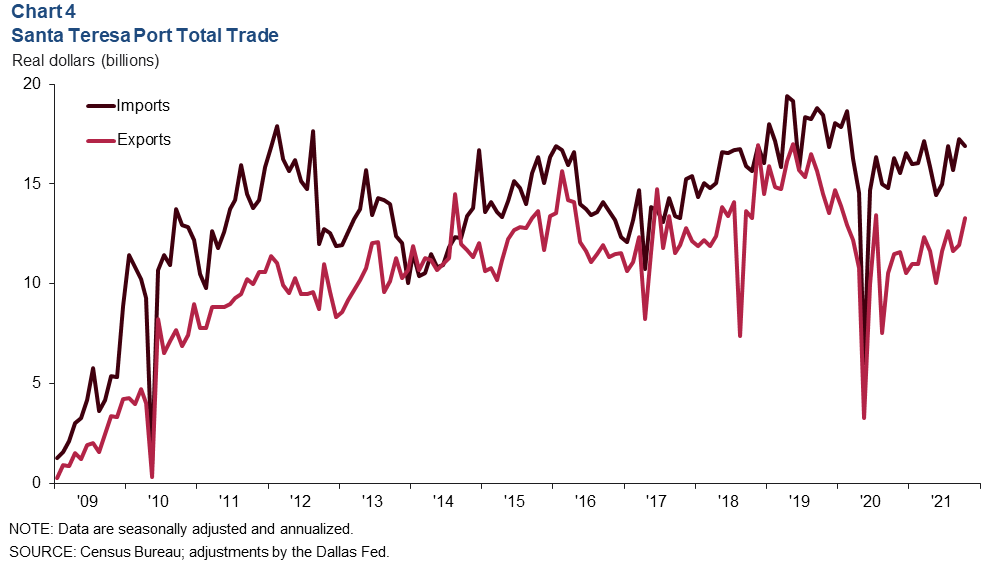
Commodity Markets
Rig Count Ticks Up, Production Falls
The New Mexico rig count rose from 84 to 89 in December (Chart 5). In contrast, oil production fell 1.7 percent to 1.33 million barrels per day in October compared with a month prior.
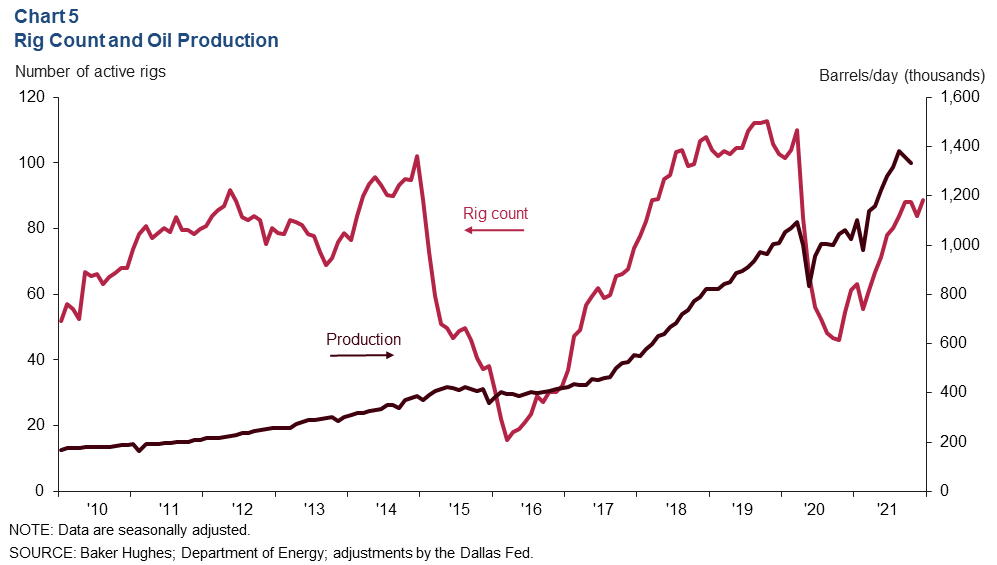
Potash Prices Flat, Copper Dips
In addition to oil and natural gas, southern New Mexico's economy is dependent on other commodities, such as potash, copper and silver. Potash prices were little changed from $220.78 per metric ton in November to $219.30 in December (Chart 6). Copper prices fell from $9,680 per metric ton in November to $9,295 in December.
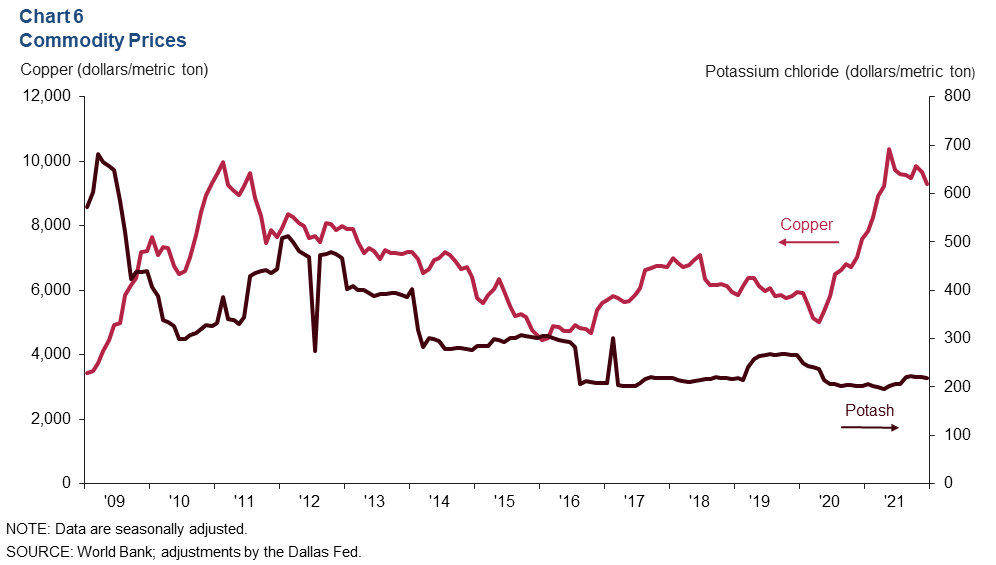
NOTES: Data may not match previously published numbers due to revisions. All New Mexico counties within the Federal Reserve’s Eleventh District are counted as part of southern New Mexico. Las Cruces is excluded from southern New Mexico to better gauge unemployment levels outside the region’s largest population center.
About Southern New Mexico Economic Indicators
Questions can be addressed to Keighton Hines at Keighton.Hines@dal.frb.org. Southern New Mexico Economic Indicators is released quarterly.